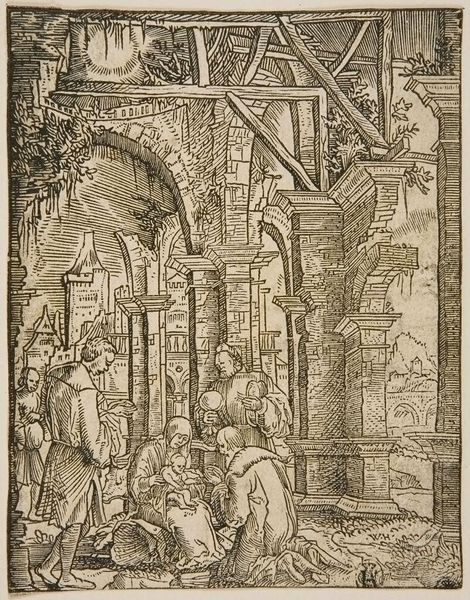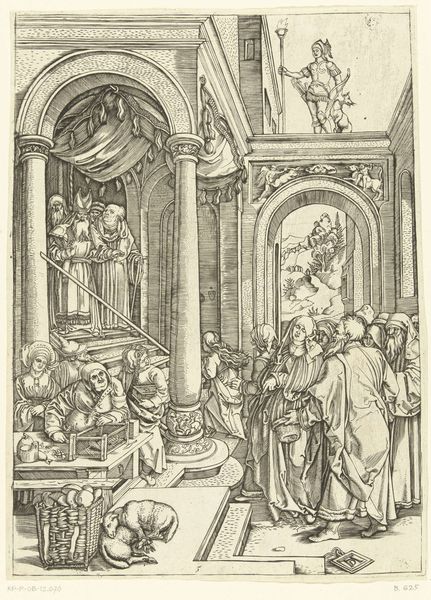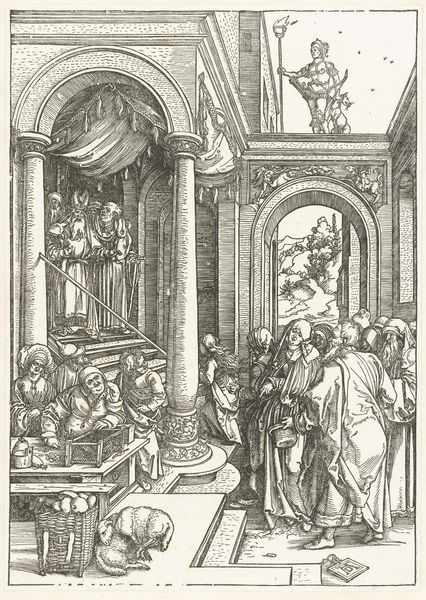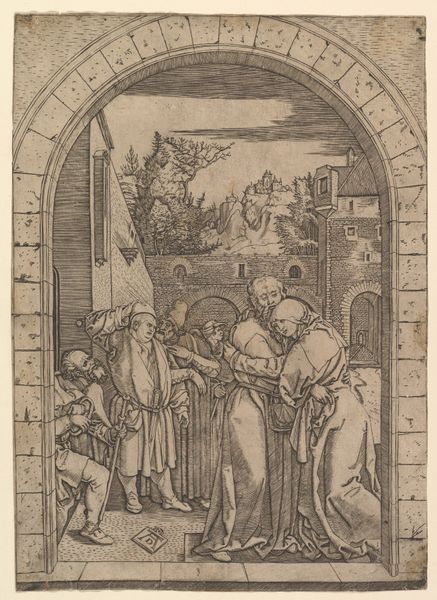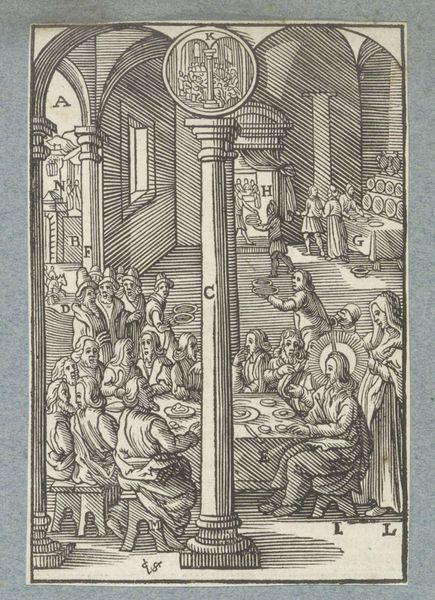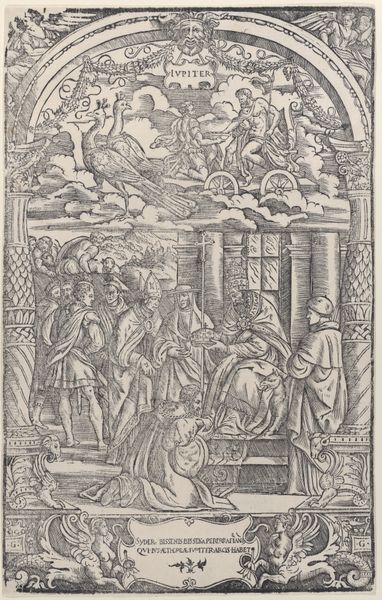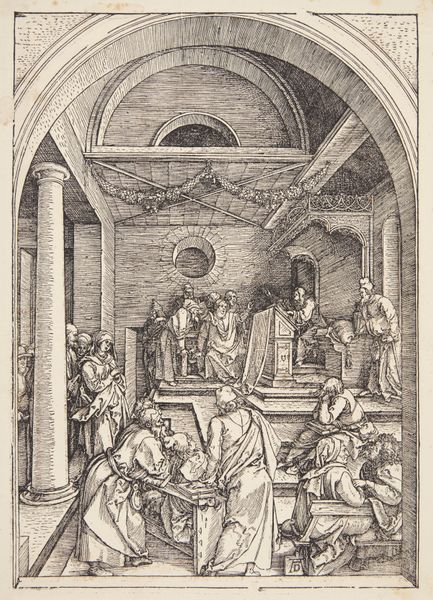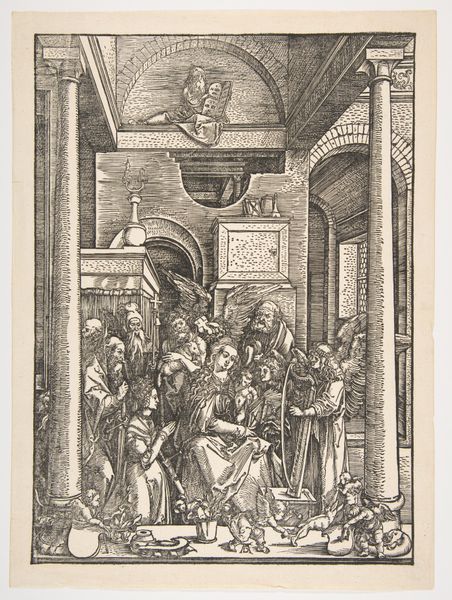
print, engraving
#
narrative-art
#
pen drawing
# print
#
pen illustration
#
old engraving style
#
ink line art
#
line
#
genre-painting
#
northern-renaissance
#
engraving
Dimensions: height 118 mm, width 92 mm
Copyright: Rijks Museum: Open Domain
Curator: Alright, let’s take a closer look at this engraving, “The Adoration of the Christ Child by the Kings,” created sometime between 1500 and 1553, and attributed to Wolfgang Huber. Editor: Immediately, I'm struck by this kind of hushed reverence. It feels almost theatrical. Everything’s crammed into the frame, the crumbling architecture contrasting with this holy moment. Sort of an interesting juxtaposition, don't you think? Curator: It is fascinating. The piece showcases the artist’s mastery of line work, doesn't it? We see this not just in the figures of the kings presenting their gifts, but also in the almost chaotic background. Huber positions this well-known scene within an environment suggesting the decay of older orders, literally and figuratively making space for the new faith. Editor: Decay is a great way to describe it. See, to me, that backdrop has this almost surreal quality. Is it me or does the precision and chaos dance together? Look how it pulls your eye around – from the city skyline in the distance, all the way to that funky light source up top that is giving off so much glow and character, doesn’t it? It reminds me of certain dramatic staging—shadows amplifying the narrative! Curator: Indeed! And those details underline what might be seen as the primary innovation here – setting a biblical scene very firmly in the observable world, that a contemporary audience would know. And of course, by doing so, grounding faith in daily experience, rather than some abstracted otherness. It's a brilliant statement about how art reflects, reinforces, and shapes social and spiritual values. Editor: Exactly! Plus, there's a kind of roughness to it that I really like. Like it's not trying too hard to be perfect. Which makes the holiness kind of more believable to me. The whole thing’s like this potent blend of real and ideal… very human, you know? Curator: It really speaks volumes about the era, where old structures are quite literally being repurposed and rebuilt according to modern aesthetics and religious beliefs. Thank you for those observations! Editor: Thanks for guiding me with your expert insight! It's funny how old art keeps sparking new thoughts, right? Always something to find.
Comments
No comments
Be the first to comment and join the conversation on the ultimate creative platform.
